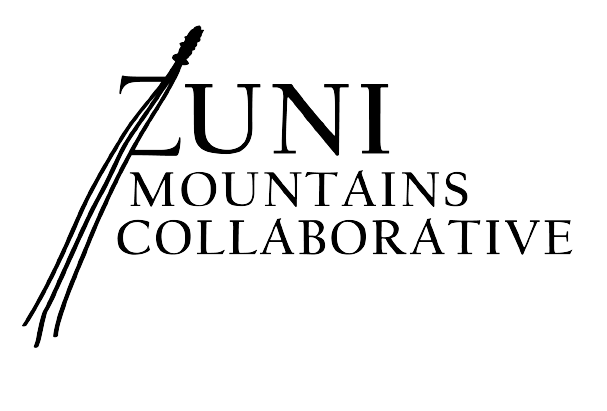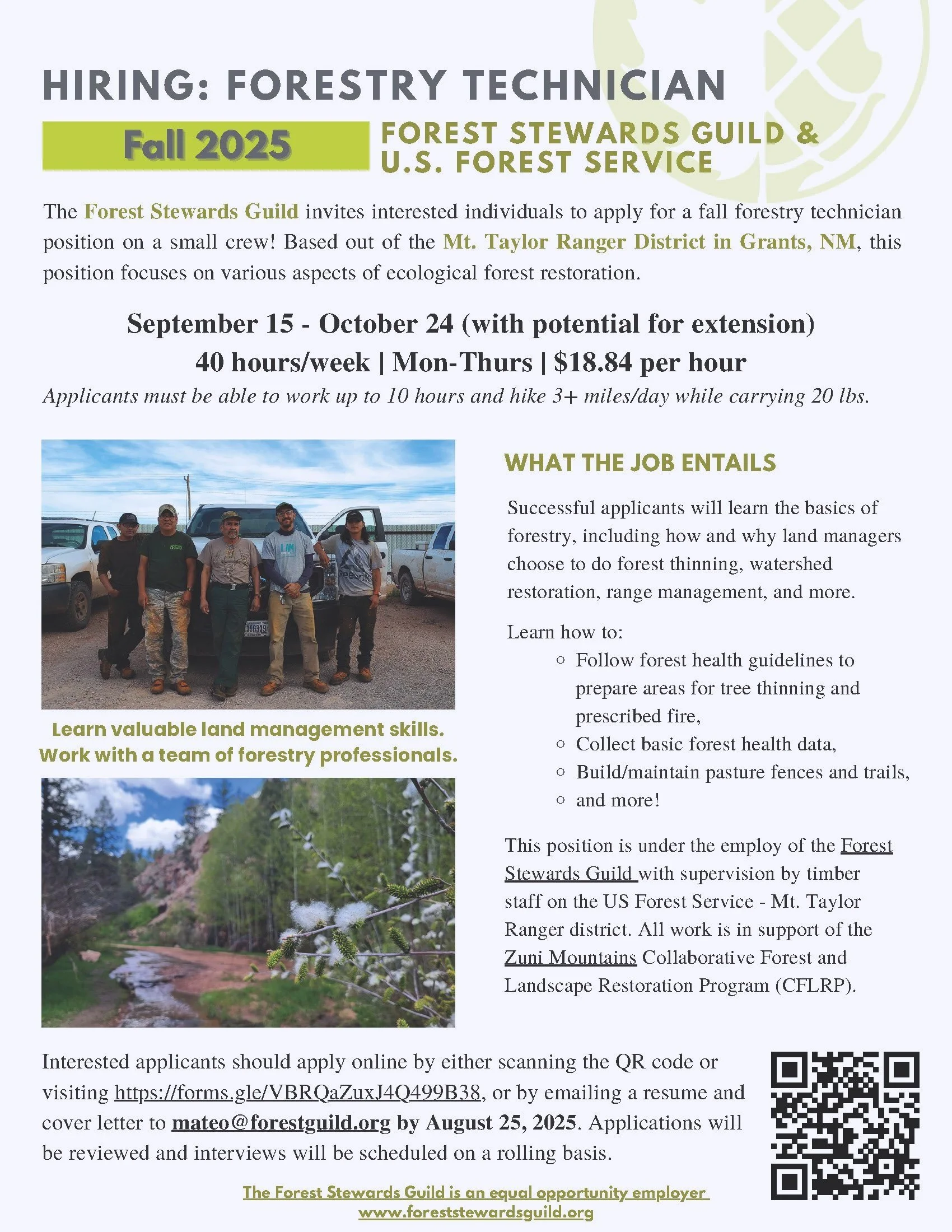The Forest Stewards Guild is pleased to announce that it is hiring several full-time temporary Forestry Technicians in the Zuni Mountains in west-central New Mexico. This is a great opportunity for individuals who enjoy working outdoors and want to learn more about forestry, range management, prescribed fire, and ecological restoration. Successful applicants will be part of a small forestry crew out of the Mt. Taylor Ranger District working on:
Preparing parcels of public land for forest thinning (strategically cutting trees for forest health) and prescribed burning (intentional/good fire),
Managing rangeland and grazing allotments by building or maintaining fences,
Maintaining recreation opportunities - such as hiking, biking, and horseback riding trails,
Measuring and collecting forest health data to track treatment (thinning and burning) effectiveness and changes to the forest over time,
and more!
Here are a few key details about the position:
It is based out of Grants, NM,
The pay is $18.84 per hour and comes with full benefits,
The position runs for 6 weeks from September 15 - October 24 with the potential for extension, and
The work week is 40 hours, Monday through Thursday (7:00am - 5:30pm including a 30-minute lunch break).
Interested individuals should complete an online application no later than 5:00pm MT on Monday, August 25, 2025. Applications will be reviewed and interviews scheduled on a rolling basis. Questions may be directed to Mateo Pomilia, Forest Stewards Guild Program Manager, at mateo@forestguild.org. We look forward to hearing from you!


